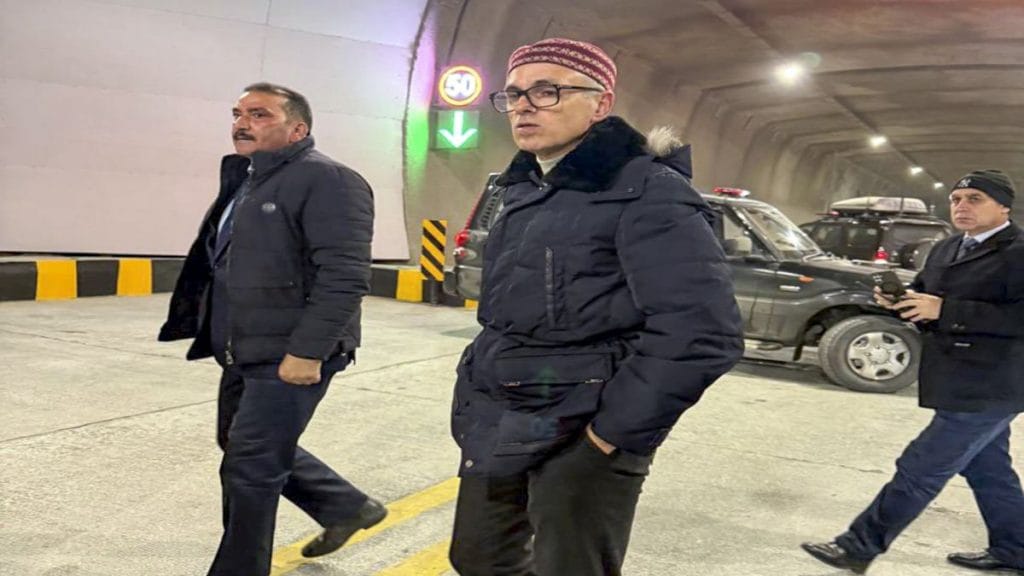Prime Minister Narendra Modi will be in Jammu and Kashmir area today (January 13). This will be the PM’s 12th visit to the Union Territory since he came to power for the first time in 2014.
But why?
PM Modi will inaugurate the much-anticipated Z-Morh Tunnel in Jammu and Kashmir’s Ganderbal district, which will not only provide all-weather connectivity to the famous tourist resort of Sonamarg but will also help connect Kashmir and Ladakh throughout the year. The launch, which is expected to happen around 11.45 am will also see PM Modi speaking with the workers, who were involved in the building of this tunnel.
Ahead of the big day, security forces sanitised the area with searches and patrols being conducted for the smooth conduct of the event. Chief Minister Omar Abdullah in a post on X on Saturday, while reviewing the preparations wrote, “Visited Sonamarg today to review preparations for PM Narendra Modi ji’s visit on Monday. The inauguration of the Z-Morh tunnel will open Sonamarg to tourism all year round.”
To this, PM Modi replied that he is eagerly waiting for his visit to Sonamarg to inaugurate the Z-Morh tunnel.
But what do we know of this tunnel? What purpose will it serve? Why is it significant?
The Z-Morh tunnel is a 6.4-km-long bi-directional tunnel connecting the popular Sonamarg health resort with Kangan town in Kashmir’s Ganderbal district. The name Z-Morh comes from the Z-shaped road stretch that was previously at the spot where the tunnel has now been constructed. Before the tunnel, this stretch — situated at an altitude of over 8,500 feet — was prone to snow avalanches, closing off Sonamarg road for the most part of the winter.
Work on the Z-Morh tunnel began by the Border Roads Organisation in 2012. The BRO then handed over the construction of the infrastructure project to Tunnelway Ltd and was later taken over by the National Highways and Infrastructure Development Corporation Limited (NHIDCL).
The project, over 10 years in the making, has finally been completed at a cost of Rs 2,400 crore. In addition to being a two-lane, bi-directional structure, the tunnel also has a parallel escape tunnel, which can be used for emergencies as well as a railway tunnel.
According to those involved in the making, the tunnel can handle up to 1,000 vehicles per hour at a maximum speed of 80 kmph. Moreover, it has been constructed using the New Austrian Tunneling Method (NATM).
The Z-Morh tunnel is expected to change tourism in the region, which, in turn, will bring significant economic benefits to Jammu and Kashmir. With the completing of the tunnel, the tourist town of Sonamarg — also known as the ‘Meadow of Gold’ — will be accessible all year round, enabling businesses that normally are forced to shut down, remain open and do business, earning revenue.
The new tunnel will also reduce travel time between Gagangeer and Sonamarg to just 20-25 minutes, ensuring uninterrupted access throughout the year.
As PM Modi earlier said, “The Z-Morh Tunnel will transform Sonamarg into a year-round tourist destination, creating new opportunities for winter tourism and local businesses.”
Hoteliers, traders and others are optimistic about the tunnel’s potential to unlock more tourism in the region. They are also hoping that it will open up new avenues for adventure sports and winter tourism.
The Z-Morh tunnel will also improve trade and transport between Kashmir and Ladakh. The farmers and traders will benefit as the tunnel will cut down travel time and also improve road safety. Moreover, by providing year-round access, there is a possibility that more investment will flow into the region, boosting local economies and improving the quality of life for residents.
Apart from providing all-year connectivity and boosting trade and tourism, the Z-Morh tunnel is expected to provide a strategic edge to India.
Part of the broader
Zojila Tunnel project, the Z-Morh tunnel will connect Sonamarg to the rest of Kashmir. Meanwhile, the Zojila Tunnel, which is expected to be completed by 2028, will connect Sonamarg to Drass in Ladakh. What this means is that both the tunnels will provide all-weather access to Ladakh’s strategic border regions, including Kargil and Leh.
This is significant as Ladakh borders Pakistan and China — both countries which share strained ties with India. With the tunnel, India’s dependence on air transport to move personnel as well as equipment to forward areas will be cut down significantly.
As of now, the Indian Army has to depend heavily on air transport to move its supplies to forward posts. However, with this tunnel, this dependence will reduce, making it cost-effective for the military as well. It will also, according to an Indian Express report, extend the life of military aircraft, which currently bear the burden of year-round supply missions to Ladakh’s remote locations.
The Z-Morh tunnel, which will be inaugurated by PM Modi in the presence of J-K CM Omar Abdullah as well as Union Minister Nitin Gadkari, is part of the network of 31 tunnels being built in the region. Twenty tunnels are being built in Jammu-Kashmir and 11 in Ladakh — at a combined investment of Rs 2,680 crore.
With inputs from agencies
Link to article –
PM Modi to inaugurate Z-Morh Tunnel in Jammu-Kashmir: Why is it significant?

